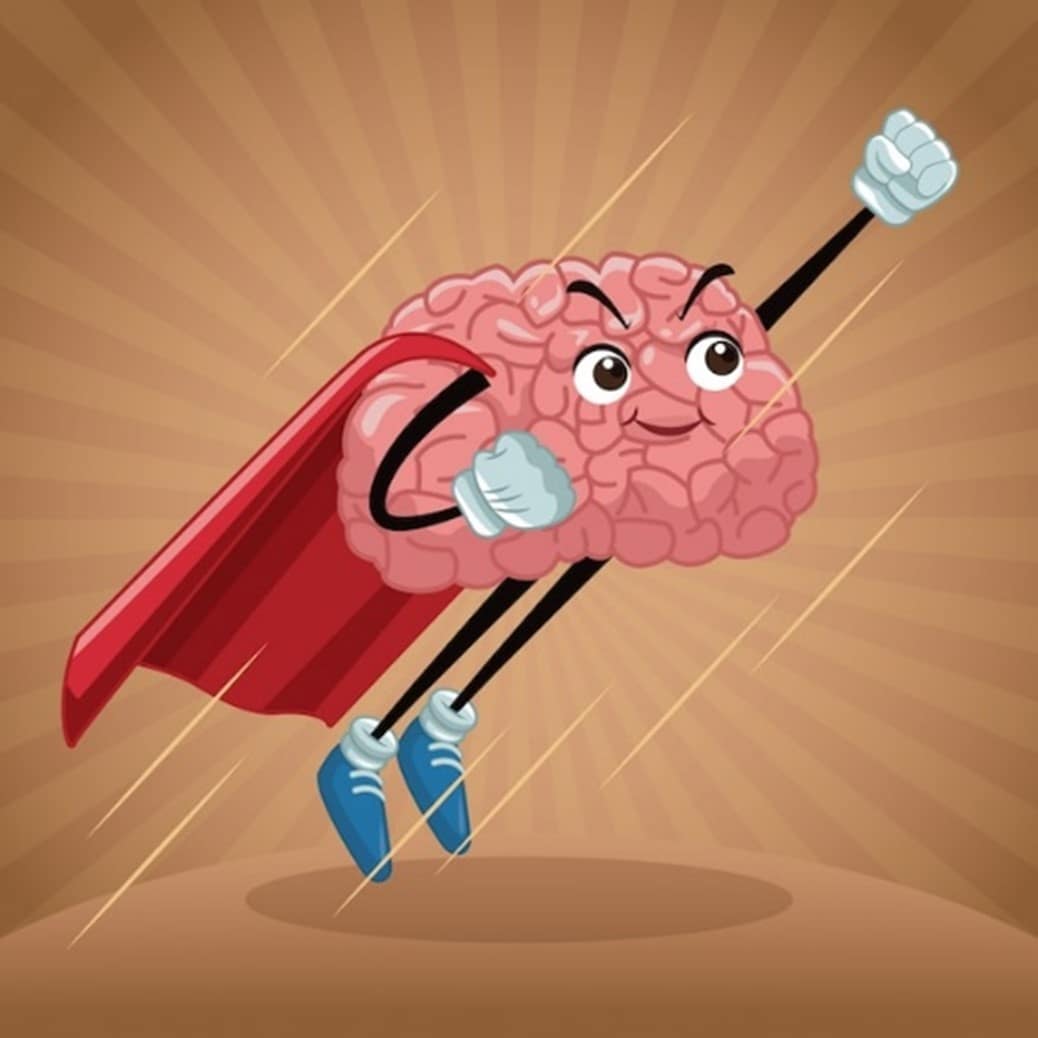3 Brain Exercises to Fight OCD Impulses

Introduction to Brain Exercises
Combating obsessive-compulsive disorder (OCD) impulses can benefit from targeted mental exercises for OCD. Cognitive interventions provide a proactive approach to disrupting intrusive thoughts and compulsive behaviors. Engaging in mental exercises, such as mindfulness meditation, challenges the brain to refocus and promotes awareness, reducing the grip of OCD. Cognitive-behavioral therapy exercises encourage restructuring negative thought patterns, fostering healthier responses. Additionally, exposure and response prevention exercises involve gradual confrontation with fears, rewiring the brain’s response to triggers. Incorporating these brain exercises for OCD into a comprehensive treatment plan offer individuals with OCD valuable tools to manage and mitigate the impact of their condition.
Understanding OCD Impulses
OCD impulses stem from distressing obsessions, compelling individuals to perform ritualistic behaviors. Driven by anxiety, these compulsions temporarily alleviate distress but reinforce the cycle. Recognizing the irrational nature of these thoughts is crucial. Cognitive-behavioral therapy (CBT) targets these impulses, aiming to restructure thought patterns and gradually expose individuals to anxiety triggers, fostering healthier coping mechanisms and reducing the impact of OCD.
What Are OCD Impulses?
OCD impulses are distressing, intrusive thoughts driving compulsive behaviors in individuals with Obsessive-Compulsive Disorder (OCD). Rooted in anxiety, these impulses fuel rituals aimed at preventing feared events. The cyclical nature of this disorder involves temporary relief through compulsions, reinforcing the need for intervention. Cognitive-behavioral therapy (CBT) addresses these impulses by restructuring thought patterns and exposing individuals to anxiety triggers, fostering more adaptive responses.
How Do They Manifest?
A per the best OCD treatment with TMS in Mumbai OCD impulses manifest through persistent, unwanted thoughts (obsessions) triggering ritualistic behaviors (compulsions). Obsessions with contamination or injury are common. Compulsions, such as excessive washing or checking, temporarily alleviate anxiety. These manifestations vary widely but share a common theme of distress and the compulsive need to neutralize perceived threats, often interfering significantly with daily life and well-being.
The Importance of Cognitive Exercises for OCD
Cognitive exercises are important in mental health, fostering cognitive flexibility, problem-solving skills, and emotional regulation. By challenging and reshaping thought patterns, these mental exercises for OCD contribute to improved mental well-being. Incorporating cognitive exercises, such as mindfulness or cognitive restructuring, enhances resilience, reduces stress, and supports overall cognitive health, emphasizing the crucial interplay between cognitive activities and mental wellness.
Enhancing Cognitive Flexibility
Enhancing cognitive flexibility involves cultivating adaptability in thought processes. Activities such as puzzles, strategic games, and mindfulness exercises challenge the brain to shift perspectives and problem-solve efficiently. Our doctors at the hospital for TMS for OCD in Mumbai says this mental agility contributes to better decision-making, improved learning, and resilience in the face of change. Engaging in diverse cognitive tasks fosters a more adaptable and versatile mindset, essential for navigating complex situations and promoting overall cognitive well-being.
Strengthening Response Inhibition
Strengthening response inhibition involves refining the ability to suppress impulsive actions. Cognitive exercises, like the Stroop Test or Go/No-Go tasks, target this skill, enhancing self-control and decision-making. By training the brain to resist immediate urges, individuals develop a more measured and deliberate approach to actions. This heightened response inhibition is crucial for navigating complex situations and maintaining better impulse control in various aspects of life.
Boosting Working Memory
Boosting working memory involves exercises that enhance the brain’s ability to temporarily hold and manipulate information. Activities like dual-tasking, puzzles, and memory games challenge and improve this cognitive function. Strengthening working memory is linked to improved learning, problem-solving, and overall cognitive performance. These exercises are vital for individuals seeking to enhance their cognitive capacities and optimize mental processes related to information processing and recall.
3 Brain Exercises for OCD to Combat Impulses
Combating OCD impulses involves targeted brain exercises for OCD. Mindfulness meditation fosters awareness, disrupting intrusive thoughts. Cognitive-behavioral therapy exercises restructure thought patterns, promoting healthier responses to triggers. Exposure and response prevention exercises gradually confront fears, rewiring the brain’s response. Our doctors at the TMS treatment hospital for OCD in Mumbai these exercises, part of a comprehensive treatment plan, empower individuals to manage and mitigate the impact of obsessive-compulsive disorder, offering valuable tools for self-regulation.
1. Cognitive Restructuring
Cognitive restructuring is a therapeutic technique targeting distorted thought patterns. It involves identifying and challenging negative, irrational thoughts, and then replacing them with more balanced and realistic ones. Here is step by step guide on how to do this mental exercise for OCD:
a. Identify the Obsessive Thought:
Take some time to notice when you’re experiencing obsessive thoughts. Write down these thoughts as they arise, noting the situations or triggers that accompany them.
b. Challenge the Thought:
Examine the evidence for and against the obsessive thought. Ask yourself questions like, “Is there any real evidence supporting this thought?” or “Have I exaggerated the potential consequences?”
c. Replace with Rational Thought:
Generate a more balanced and realistic alternative to the obsessive thought. For example, if the obsessive thought is “I must wash my hands repeatedly to avoid contamination,” replace it with “I can practice good hygiene without excessive washing.”
d. Repeat Affirmations:
Create affirmations that support the rational thought and repeat them regularly, especially when faced with the obsessive thought. For instance, say to yourself, “I trust myself to handle uncertainty” or “I am stronger than my OCD.”
e. Practice Daily:
Make cognitive restructuring a daily habit. Set aside dedicated time each day to identify and challenge obsessive thoughts, gradually strengthening your ability to replace them with rational ones.
As the non-invasive therapies OCD widely used in cognitive-behavioral therapy, this process aims to reshape perceptions, fostering healthier responses to stressors. By altering cognitive frameworks, individuals can enhance emotional well-being and develop more adaptive coping mechanisms.
2. Mindful Awareness
Mindful awareness involves intentionally focusing on the present moment without judgment. Follow these steps to perform this mental exercise for OCD:
a. Focus on the Present Moment:
Find a comfortable sitting position and direct your attention to your breath. Observe the sensation of each inhale and exhale, staying fully present in the moment.
b. Non-Judgmental Observation:
Allow your thoughts, emotions, and bodily sensations to arise without passing judgment on them. Rather than reacting, simply observe them with impartiality.
c. Acceptance:
Practice accepting whatever arises in your mind without attempting to alter it. Understand that thoughts are transient and do not define you.
d. Grounding Techniques:
Use your senses to anchor yourself in the present. Notice the sounds in your environment, feel the sensation of your feet on the ground, or focus on the rhythm of your breath.
e. Regular Practice:
Integrate mindfulness into your daily routine. Set aside dedicated time for formal meditation sessions, and also incorporate mindfulness into everyday activities such as eating, walking, or washing dishes.
Rooted in mindfulness meditation, this practice promotes heightened consciousness of thoughts, feelings, and surroundings. By cultivating this awareness, individuals can manage stress, improve emotional regulation, and enhance overall well-being. Regular mindful practices, such as meditation or mindful breathing, foster a more grounded and centered approach to daily life.
3. Exposure and Response Prevention
Exposure and Response Prevention (ERP) is a therapeutic technique used to treat anxiety disorders, especially OCD. It involves gradual exposure to anxiety-inducing stimuli or thoughts while preventing associated compulsive behaviors. Here are the steps to do this brain exercise for OCD:
a. Create a Hierarchy
List situations or triggers related to your OCD from least to most anxiety-provoking. Start with situations that provoke mild anxiety and gradually work your way up.
b. Exposure
Begin exposing yourself to the least anxiety-provoking situation on your hierarchy. Stay in the situation for an extended period without engaging in compulsive behaviors.
c. Stay in the Situation:
Resist the urge to perform compulsions or rituals despite the discomfort or anxiety you may feel. Remind yourself that anxiety will naturally decrease over time.
d. Practice Relaxation Techniques:
Use relaxation techniques to manage anxiety during exposure. Deep breathing, progressive muscle relaxation, or visualization can help you stay calm and grounded.
e. Repeat and Progress:
Repeat exposure exercises regularly, gradually moving up your hierarchy as you become more comfortable with each level of exposure. Challenge yourself to face increasingly anxiety-provoking situations over time.
As per the TMS treatment doctors for OCD in Mumbai, this process helps individuals confront fears, desensitize anxiety triggers, and retrain their responses. ERP is integral in breaking the cycle of obsessive-compulsive patterns and fostering healthier coping mechanisms.
Implementing targeted brain exercises for OCD is crucial in the ongoing battle against OCD impulses. Mindfulness meditation, with its focus on present awareness, disrupts intrusive thoughts and promotes self-regulation. Cognitive restructuring, by challenging distorted thought patterns, encourages healthier responses to triggers. Exposure and response prevention exercises gradually desensitize anxiety-inducing situations, reshaping responses. These mental exercises for OCD collectively empower individuals to manage and mitigate the impact of obsessive-compulsive disorder, fostering adaptive coping mechanisms. Incorporating such practices into a comprehensive treatment plan offers valuable tools for self-regulation, contributing to improved mental well-being and a more balanced approach to daily life.
Boost your mental health on the road to OCD recovery. Check out our blog: Nutrition for Mental Health: Foods that Support OCD Recovery
Best Non-Invasive Therapies for OCD in Mumbai
Jaslok Hospital’s Restorative and Regenerative Medicine department offers the best non-invasive therapies OCD in Mumbai. These therapies include cognitive-behavioral therapy, exposure and response prevention therapy, and mindfulness-based approaches. The department also offers transcranial magnetic stimulation (TMS), a non-invasive therapy that uses magnetic pulses to stimulate specific areas of the brain. These therapies are proven to be effective in treating OCD without the need for invasive procedures or medication. Jaslok Hospital’s team of expert therapists and doctors ensures that patients receive personalized care and treatment.





